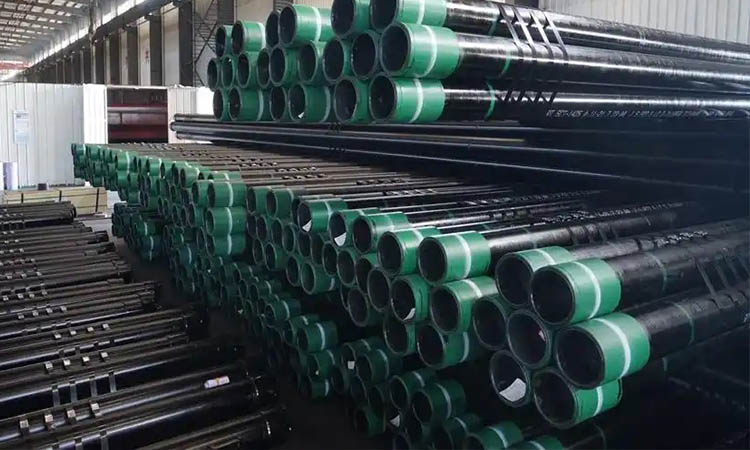Drilling string combination types and selection
What is combination drilling string?
Combination drilling string is also called drilling tools coordination. It is specifically for large borehole deep well drilling (such as oil and gas well drilling). It refers to the way a certain size of drill bit cooperates and connects with a certain size of drill collar, drill pipe, and square drill rod during drilling. It is an important issue related to safe, fast, and high-quality drilling.
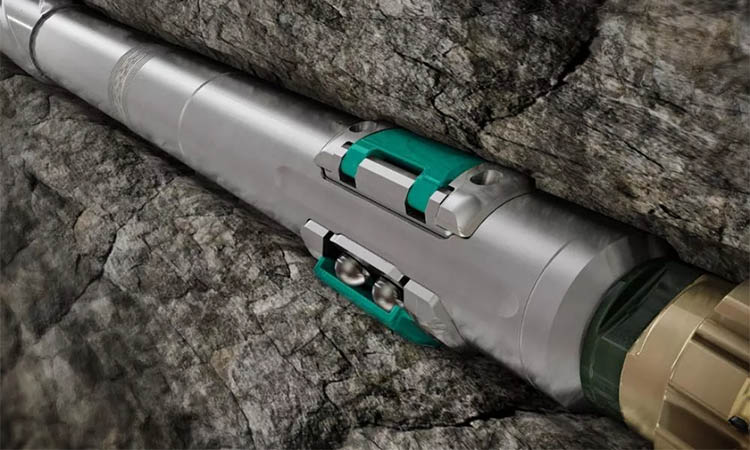
1. Drill string combination
1) Drilling tool combination: refers to the selection and connection of various drilling tools that make up a well drill string.
2) Lower drilling tool combination: refers to the composition of the lowest section of the drill string.
3) Drill string: refers to the general term for the drill string from the faucet below the drill bit above the drill bit. It is composed of square drill rods, drill rods, drill collars, joints, stabilizers and other drilling tools.
4) Reversing drilling tools: When drilling, change the original order of lowering some stand roots to change the stress condition of the drilling tools.
5) Three underground devices: stabilizer, shock absorber and jar.
6) Drill string neutral point: The total weight of the drill string minus the weight of the part of the drill string used to pressurize the drill bit forms a position that is neither pulled nor compressed, which is called the drill string neutral point.
2. Main types of drill tool combinations
The drill string is the hub connecting the ground and the underground. Different drill string structures and stress states in the underground determine the size and direction of the drilling pressure on the drill bit. For example, when directional drilling or the well is highly deviated, the actual drilling pressure on the drill bit is smaller than the data displayed on the drilling pressure table. If the drill string combination is equipped with a stabilizer, the actual drilling pressure is even smaller. At the same time, due to the friction between the stabilizer and the well wall, the working stability of the drill bit is enhanced, which is conducive to the use of the drill bit.
① (Rigid) Full-eye drilling tool: A lower drilling tool combination consisting of multiple stabilizers with an outer diameter close to the drill bit diameter and large-sized drill collars. Used to prevent and stabilize deflection.
② Tower drilling tool: A lower drilling tool assembly composed of several drill collars of different diameters, which is small at the top and large at the bottom. Used to prevent well deflection.
③ Pendulum drilling tool: In a deviated wellbore, a section of drill collar above the drill bit and below the cutting point is like a "pendulum". Under the lateral component of the gravity of this section of drill collar, that is, the pendulum force, the drill bit leans against and cuts the lower well wall, thereby reducing the well deflection angle. The lower drilling tool assembly combined using this principle is called a pendulum drilling tool. Used to prevent and correct deflection.
3. Increasing, decreasing, and stabilizing inclination drilling tool assembly
1) Decreasing inclination assembly:

2) Increasing inclination assembly:

3) Stabilizing inclination assembly:
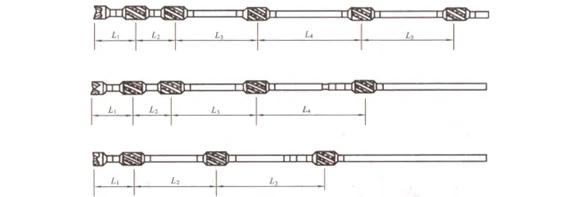
The properties of the drilling tool assembly are different when the stabilizer is placed in the different positions in the drilling tool assembly. Generally speaking, the closer the near-drill stabilizer is to the drill bit, the greater the inclination-increasing force of the drill bit, and vice versa. For a drilling tool assembly with more than two stabilizers, the greater the distance between the No. 1 stabilizer and the No. 2 stabilizer within the effective range, the greater the drill bit's inclination force, and vice versa.
4. Full-eye drilling tool assembly
1) What is the principle of full-eye drilling tool assembly to control well inclination? Can it reduce the well inclination angle?
Answer: There are three reasons for well inclination: ① Asymmetric cutting of the well bottom by the drill bit; ②The drill bit axis is tilted relative to the wellbore axis; ③The lateral force on the drill bit causes lateral cutting of the well bottom. The full-eye drilling tool assembly is designed to overcome the above three reasons. Using a full-eye drilling tool assembly in a well that has already deviated cannot reduce the well inclination angle, but can only make the well inclination change very small or unchanged. Therefore, the main function of the full-eye drilling tool assembly is to control the wellbore curvature, but not the size of the well inclination angle.
2) The following issues should be noted when using a full-hole drilling tool assembly:
Answer: ① Using a full-hole drilling tool in a well that has already deviated cannot reduce the well inclination angle, but can only make the well inclination angle change very small or unchanged (increase or decrease in inclination). Therefore, the main function of the full-hole drilling tool assembly is to control the wellbore curvature, but not the size of the well inclination angle.
② The key to using a full-hole drilling tool assembly lies in the word "full", that is, the gap between the stabilizer and the wellbore has a significant impact on the performance of the full-hole drilling tool assembly. The gap should be as small as possible during use. The design gap is generally Δd=dh-ds=0.8~1.6mm. During use, the gap will increase due to the wear of the stabilizer. When the gap Δd reaches or exceeds twice the design value, the stabilizer should be replaced or repaired in time.
③ Another key to maintaining "full" is that the well diameter must not be expanded. This requires good drilling fluid wall protection technology. But even if the drilling fluid wall protection technology is not good, the expansion of the well diameter will always take a certain amount of time. As long as a new wellbore is drilled before the wellbore diameter is expanded, the "full" effect can still be maintained. This requires speeding up the drilling speed.
④ When drilling in soft and hard interlaced or large-angle formations, pay attention to appropriately reduce the drilling pressure and frequently ream the eye to eliminate possible "dog legs".
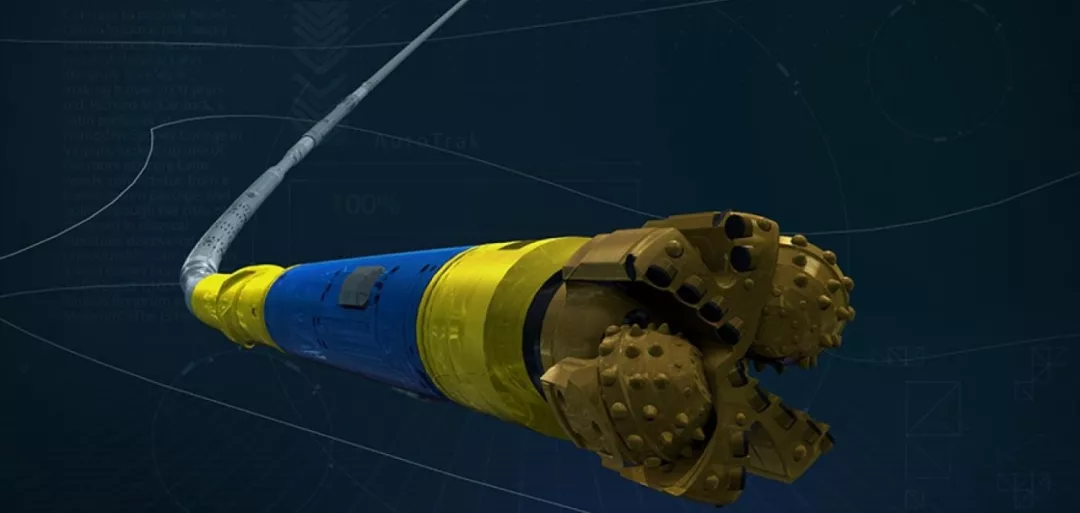
3) The "full eye" problem caused by the lower structure of the full-eye stabilizer:
Answer: ① It is easy to encounter resistance when drilling down, and the spiral stabilizer will also cause the drill string to "rotate" in the small wellbore section. Minor obstructions can often be passed through controlled "smashing down" and "lifting and releasing".
② Drilling out is prone to suction (piston pulling) problems: Due to "full eyes", the piston is pulled out of the well section that is easy to absorb water and expand. Shengli Oilfield has experienced a gas layer blowout caused by pulling out the piston in the inclined well, and the lesson is painful. Because of this, the mud inhibition of the inclined well is required to be good, the mud cake of the well wall should be thin, and the occurrence of piston pulling should be very careful during operation and handled correctly.
③ The sensitivity of curved wellbore to the change of drilling tool stiffness: The curvature of the drilled curved wellbore is certain. When the drilling tool combination needs to be more rigid for trajectory control (increasing the number of stabilizers and shortening the stabilizer interval), it is easy to encounter obstacles and jams. It is necessary to be extra careful when drilling and reaming.
It is particularly worth reminding that after orientation or adjustment of the azimuth, it is necessary to use a relatively "soft" rotary table drilling tool combination to clear the well.
5. Pendulum drilling tool combination
1) What is the principle of pendulum drilling tool combination to control well inclination? Why is the drilling speed very slow when using it?
Answer: When the pendulum swings over a certain angle, a swinging force will be generated on the pendulum. If a stabilizer is added to the appropriate position at the bottom of the drill string, the stabilizer is supported on the well wall, so that the lower drill string is suspended, then the drill string below the stabilizer is like a pendulum, and a pendulum force will also be generated. The function of this pendulum force is to make the drill bit cut the lower side of the well wall, so that the newly drilled wellbore will continue to decrease inclination.
The performance of the pendulum drilling tool combination is particularly sensitive to drilling pressure. As the drilling pressure increases, the deflection force increases and the pendulum force decreases. If the drilling pressure increases further, the drill string below the stabilizer will be bent, and even new contact points will appear, thus completely losing the function of the pendulum combination. Therefore, the drilling pressure must be strictly controlled during the use of the pendulum drilling tool combination. When the well is not inclined or the well inclination is very small, in order to prevent the well from deflecting, the drilling pressure must be reduced to "hang and hit", so the drilling speed is very slow.
2) Use of pendulum drilling tool combination
Answer: ① The pendulum force of the pendulum drilling tool combination varies with the size of the well inclination. The larger the well inclination, the larger the pendulum force. If the well inclination is zero, the pendulum force is also zero. Therefore, the pendulum drilling tool combination is mostly used to correct the wells with large well inclination.
② The performance of the pendulum drilling tool combination is particularly sensitive to drilling pressure. As the drilling pressure increases, the deflection force increases and the pendulum force decreases. If the drilling pressure increases further, the drill string below the stabilizer will be bent, and even new contact points will appear, thus completely losing the function of the pendulum combination. Therefore, the drilling pressure must be strictly controlled during the use of the pendulum drilling tool combination.
③ When the well is not inclined or the well inclination angle is very small, in order to continue drilling and keep it from being inclined, the drilling pressure can only be reduced to "hang and hit". Since the drilling speed of "hang and hit" is very slow, the full-eye drilling tool combination is often used at this time. Only in vertical wells (sections) with particularly strict trajectory requirements, the pendulum drilling tool combination is used for "hang and hit".
④ The gap between the stabilizer and the wellbore has a particularly obvious impact on the performance of the pendulum drilling tool combination. When the stabilizer diameter is reduced due to wear, it should be replaced or repaired in time.
⑤ The use of a pendulum drilling tool combination with multiple stabilizers requires more complex design and calculation.
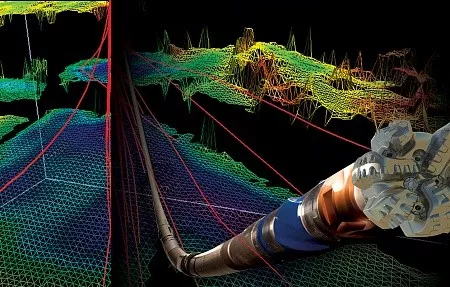
6. Methods to improve the rigidity of bottom drilling tool assembly
1) Increase the number of stabilizers;
2) Shorten the distance between stabilizers;
3) Use drill collars with high weight and high bending stiffness
7. Common drilling tool assemblies for directional wells
1) Bend joint with power drilling tool - deflection drilling tool
Currently, the most commonly used deflection drilling tool assembly is to use a bend joint and a downhole power drilling tool assembly for directional deflection or twisting azimuth construction. This deflection drilling tool assembly uses a bend joint to generate an elastic torque in the lower drilling tool, forcing the downhole power drilling tool (screw drilling tool or turbine) to drive the drill bit to cut sideways, so that the drilled new wellbore deviates from the original wellbore axis, achieving the purpose of directional deflection or twisting azimuth.
The deflection ability of the deflection drilling tool is related to the bending angle of the bend joint and the rigidity of the drill collar above the bend joint. The larger the bending angle of the bend joint and the stronger the rigidity of the drill collar above the bend joint, the stronger the deflection ability of the deflection drilling tool and the higher the deflection rate. The bending angle of the elbow should be selected according to the size of the wellbore, the specifications of the downhole power drill and the required deflection rate. The angle of the elbow is 1°~2.5°.
The model of the downhole power drill used in the deflection drilling tool combination should be selected according to the depth of the deflection section or the twisting section. The use section is within 1000m, generally using turbine drill or screw drill, deep directional deflection or twisting azimuth should use a high temperature resistant downhole motor. The deflection drilling tool combination, drilling parameter design and drill bit water hole should be designed according to the drilling parameters recommended by the manufacturer.
Due to the high speed of the downhole power drill and the low drilling pressure (generally 3~8t), the drill bit used should not be a sealed bearing drill bit, especially in shallow layers. Milling tooth rolling bearing drill bits or suitable composite PDC drill bits should be used for soft formations with good drillability.
2) Increasing deflection drilling tools
Increasing deflection drilling tools generally use double stabilizer drilling tools. Increasing deflection drilling tools are designed using the principle of leverage. It has a near-bit stabilizer of sufficient size as a fulcrum. The distance between the second stabilizer and the near-bit stabilizer should be determined according to the rigidity (size) of the drill collar between the two stabilizers and the required slope increase. Generally, it is 20 to 30 meters. Under the action of drilling pressure, the drill collar between the two stabilizers produces downward bending deformation, which causes the drill bit to produce oblique force, and the well inclination angle increases as the wellbore deepens. The drilling parameters of the inclination drilling tool combination should be designed according to the specifications of the lower drilling tool, the distance between the two stabilizers and the required slope increase. The stress conditions of the micro-increase drilling tool combination in the well are the same as those of the inclination drilling tool. It is mainly to reduce the distance between the near-bit stabilizer and the No. 2 stabilizer or reduce the outer diameter size of the near-bit stabilizer (worn stabilizer) to reduce the inclination capacity of the drilling tool. The micro-increase drilling tool is used to drill catenary profiles, secondary profiles and other well sections that require low slope increase. It can also be used for well sections where the stabilizing drill bit cannot achieve the stabilizing effect due to ground factors, so it shows a decreasing trend. The use of appropriate micro-increase inclination drill bits can achieve the ideal stabilizing effect.
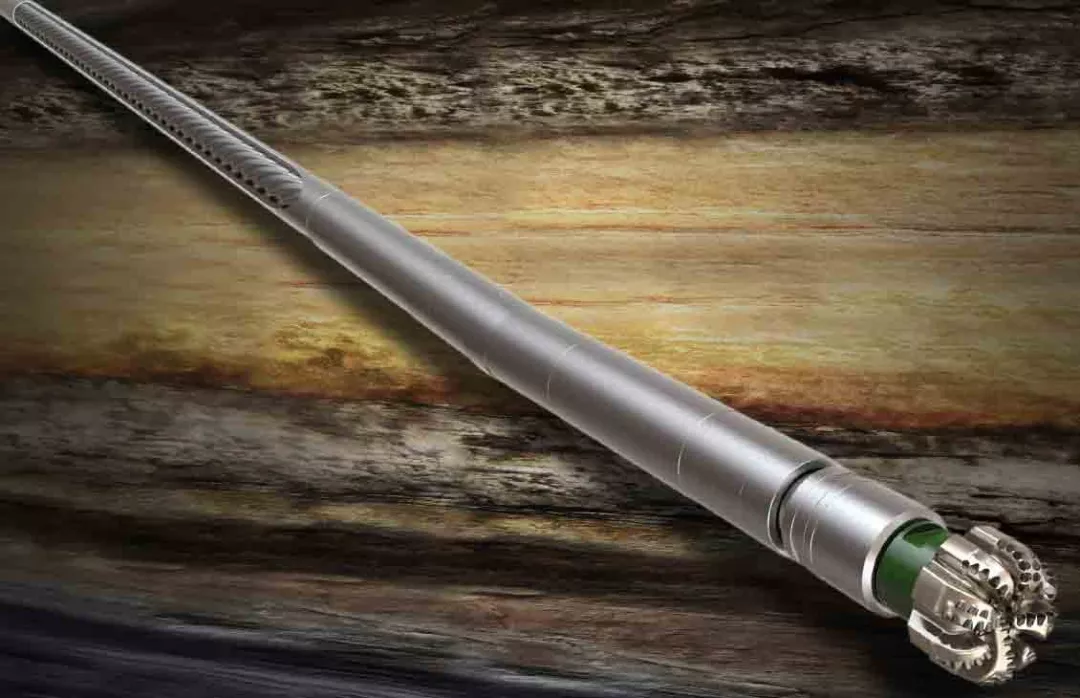
3) Stabilizing inclination drill bits
The stabilizing inclination drill bit combination adopts a rigid full-hole drill bit structure. By increasing the rigidity of the lower drill bit combination, the bending deformation of the lower drill bit under the action of drilling pressure is controlled to achieve the effect of stabilizing the well inclination and azimuth. The commonly used stabilizing inclination drill bit combination is:
Drill bit + near drill bit stabilizer + short drill collar (2~3m) + stabilizer + single drill collar (9~10m) + stabilizer sub-drill key + drill pipe. For formations with severe azimuth drift due to formation factors, two stabilizers can be connected in series on the drill bit, which can achieve better results for stabilizing azimuth and well inclination.
4) Decreasing inclination drill bits
Decreasing inclination drill bits generally adopt pendulum drill bit combinations, which use the pendulum force generated by the weight of the drill bit itself to achieve the purpose of decreasing inclination. According to the required slope reduction rate and well inclination angle of the design profile, the distance between the drill bit and the stabilizer can be designed to change the size of the pendulum force of the lower drilling tool; the drilling parameter design of the slope reduction section should limit the drilling pressure according to the wellbore size to ensure the slope reduction effect and make the slope reduction rate meet the profile requirements.
5) Inverted drilling tools
When drilling directional wells, considering that rigid drilling tools such as drill collars are not suitable for entering the inclined well section, drill collars or weighted drilling tools are usually placed in the vertical well section, and part of the drill pipe is placed under the drill collar or weighted drill pipe, which is called inverted drilling tools. Inverted drilling tools are generally used in horizontal well drilling operations, mainly for the purpose of applying drilling pressure.
Drilling Tools Supplier
Sino Mechanical Equipment is a reliable drilling tools supplier located in Shengli Oilfield, the second largest oilfield in China, with decades of experience in supplying drilling equipment and drilling tools.

